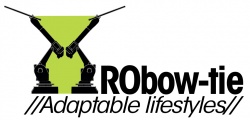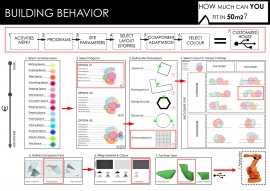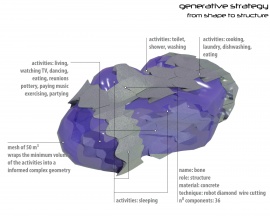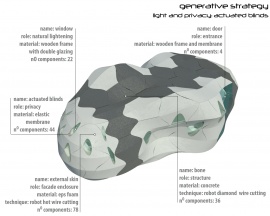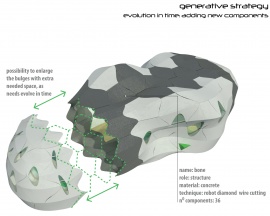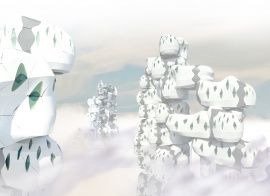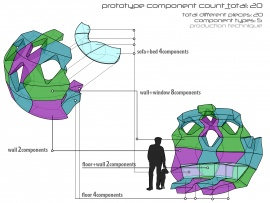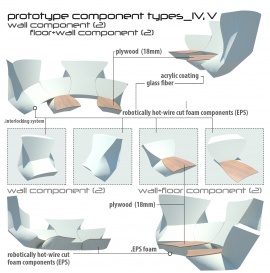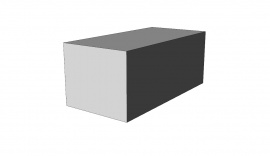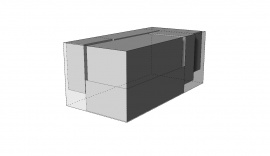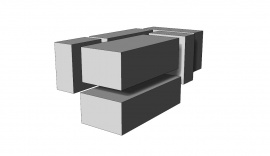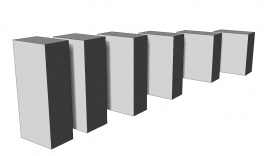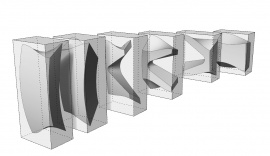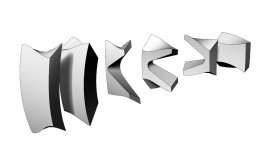project05:Frontpage
Sponsored by:
Group members
author(s): Ana Anton, Elisabeth Travlou, Evita Pronk, Karolos Michailidis, Matthew Tanti, Qiushi Wu, Serban Bodea, Vasiliki Koliaki
Other Workshops:
Project Description
RObow-tie is one of the 5 prototypes developed by MSc. 2 students in Hyperbody, within the TUDelft, in the 1:1 Fabrication Studio, Multimod. RObow-tie was designed and produced within the Hyperbody Research Group lead by Prof. ir. Kas Oosterhuis. The design and fabrication processes were tutored by Dr. N.M. Biloria, Assistant Professor and research manager Hyperbody, Dr. H.H. Bier, Assistant Professor and education manager Hyperbody and ir. H.C. Friedrich, PhD Candidate Hyperbody. Special attention to our project, in terms of Robotic-Fabrication, was given by J.D. Feringa, PhD Candidate Hyperbody. His contribution in the implementation of the Robotic Hot-wire EPS cutting technology proved essential for the fabrication effort. The prototype is designed, fabricated and assembled so as to meet the demands of a compact multimodal studio apartment.
RObow-tie is a 50m2 apartment system that has the spatial qualities and functional performance of a standard living space of 100m2. The shape is tailored to its users, allows different activities to take place simultaneously and caters for every individual's specific needs.
RObow-tie has been designed and produced with the principle of Mass Customization in mind. This production paradigm shift has the advantage of allowing component uniqueness for the same amount of cost and time as mass production. At the same time, mass customization allows for more design freedom as far as form and identity are concerned. Innovation is also present in RObow-tie's construction material choice: components are robotically fabricated out of EPS100 Foam which is light-weight, relatively inexpensive, very high compression strength and has a high insulation index. The use of the robotic hotwire-cutting technique allows for complex shapes which inspired the team to direct its research into interlocking EPS component systems which would work only in compression.
The coating on top of the EPS protects the inside from external weather conditions and offers a rigid, easily-to-clean and warm surface texture. An advantage of the design is that it’s made out of one material, EPS, which allows for an estimated 85% recyclability, this makes the whole production technique extremely sustainable and environmentally friendly.
The components out of which the house is built have been designed for dry assembly; this makes the construction process fast and effortless. The component’s complex geometry is, in a way, similar to a 3D puzzle inspired, on the inside by a bow-tie and on the outside, by a hexagon. Connected, these two different profiles create an interlocking ruled-surface that defines local geometric connections, without the need of adding connectors or glue. This easy way of assembling, also enables the building envelope to adaptable in time by adding/subtracting components to the main structural bone.
RObow-tie is a result of research conducted within the Chair of Hyperbody, TUDelft, into robotic-fabrication techniques. Methodology developed inside this research environment has proven that the fabrication technique is not limited to EPS foam and can be easily applied to materials like concrete and stone.The design team's goal has been that of embracing and often exploiting limitations given by the production technique and by the chosen material itself. This has shaped the design allowing for the exploration of a field, robotic-fabrication, that will prove extremely valuable not only as research but also as a reliable and exciting design alternative able to create a market demand for itself, in the near future.
